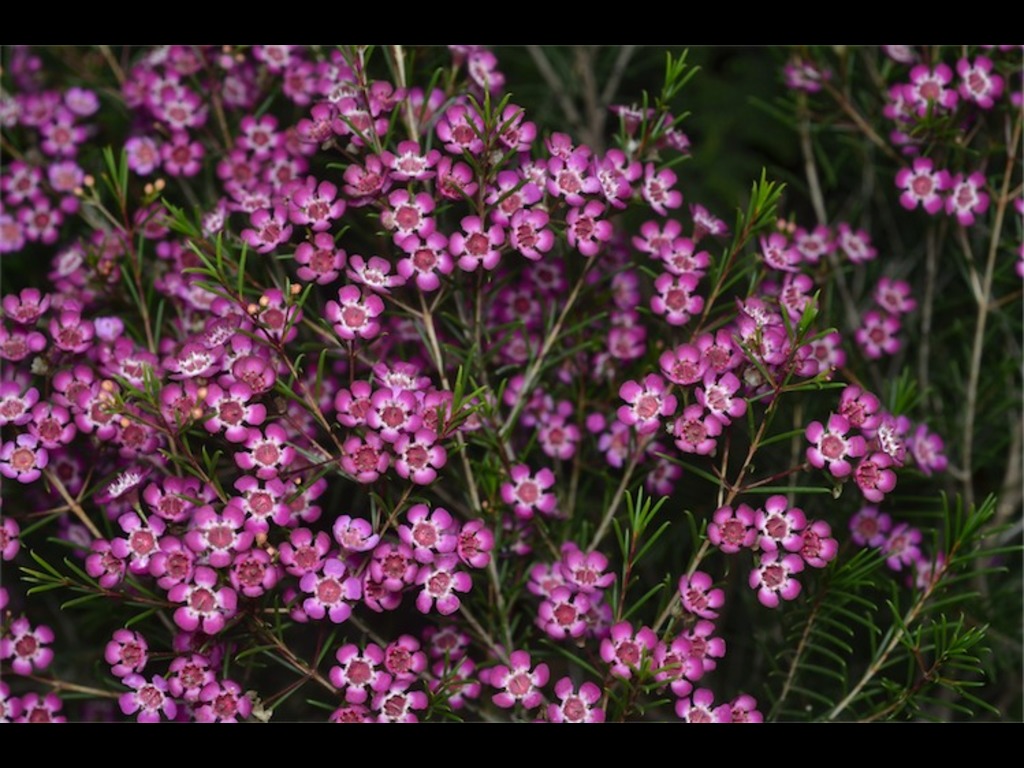Chamelaucium uncinatum 'Purple Pride'
- File Number
- 142
- ACRA Field Book Number
- -
- Registration Date
- 15/10/1992
- Application Received
- 02/09/1977
- Family
- Myrtaceae
- Cultivar Name
- Chamelaucium uncinatum 'Purple Pride'
- Origin
- A cultivar selection of Chamelaucium uncinatum from a home garden in Nedlands WA made by Mr George Lullfitz of Wanneroo in 1977. Specimen first received by the Authority on 9 September 1977. Registration applied for by Mr George Lullfitz, Lullfitz Nursery, Caporn Road, Wanneroo.
- Characteristics
- A moderately dense bushy shrub to 4m high and 3m wide, becoming more open with age, unless pruned. Leaves medium to dark green hooked at the end to 32mm long by 1.5 to 2mm across. Terminal flowers in clusters are two-tone, dark and light purple, 17mm to 20mm across. Flowering period in WA June to October. Diagnosis: Habit and form similar to locally occurring forms that is southern forms of Chamelaucium uncinatum, however the branches are more upright in growth. The distinctive feature of this old cultivar is its two-tone flower colour, it has been in the nursery trade and well recognised for many years. At present there are no known similar named cultivars, though many similar seedling, which originate from this plant, are now being cultivated. Probably the closest cultivar is 'Munn's', which also has two-toned flowers, ie deep purple on the edge of the petal and light purple centre. However this cultivar is also later flowering and the leaves are much thinner.
- Cultivation
- Tolerates a wide range of growing conditions and soil types as long as they are well drained. Widely grown in suitable conditions throughout Australia and overseas. Drought tolerance good, frost tolerance unknown, though light frosts are known to damage flowers and young growth. Propagation must be by vegetative means to preserve the cultivar form.
- Publication
- Elliot, W.R. & Jones, D.L. (1984), Encyclopaedia of Australian plants suitable for cultivation 3: 18
- Colour Coding
- RHS Colour Chart 1966.Flowers: Fresh flowers:petals red purple group 71A.staminal collar red purple group 69C.centre greyed orange group 181B.Mid aged flowers:petals purple group 76A.staminal collar purple group 76C.centre greyed orange group 177D.Old flowers:petals purple group 76C.staminal collar purple group 76C.centre greyed orange group 177D.
- Propagation
- Cuttings from semi-firm new growth
- Applicant Name
- Mr George Lullfitz,
- Uses
- As part of a mass planting or mixed in a shrubbery, or as a spectacular feature plant. Cut flowers.
- Availability
- Widely available, Kuranga nursery
- ANBG Accession Numbers
- ACC142, CBG7705484
- NSL ID
- -

